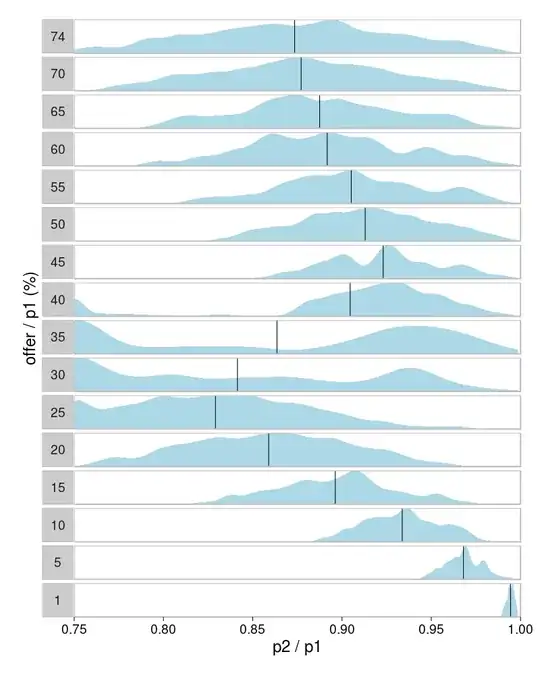I am trying to forecast aggregated daily COVID cases in Europe. These are present day numbers in Italy.
temp <- c(0 , 0 , 0 , 0 , 0 , 0 , 0 , 0 , 0, 2,
2 , 2 , 2 , 2 , 2 , 2 , 3 , 3 , 3, 3,
3 , 3 , 3 , 3 , 3 , 3, 3 , 3 , 3 , 3,
20 , 62 , 155 , 229 , 322 , 453 ,655 , 888, 1128 , 1694,2036 ,
2502 ,3089 , 3858, 4636 , 5883 , 7375, 9172, 10149, 12462,12462)
My problem is that all the models underestimates the exponential growth patterns as this one with exponential smoothing. (if I try to predict using data until 4636 value, the different models estimates 8-9,0000 when the real number was 12,462). I have tried transformations, different models etc.
library(data.table)
library(tidyverse)
library(forecast)
library(lubridate)
COVfirst <- min(which(temp > 0))+22 #starts 22 day in january
temp2 <- ts(temp, start = c(2020, 22),
frequency = 365.25)
temp2 %>% autoplot
test <- ets(temp2,
allow.multiplicative.trend =TRUE)
test %>% forecast(., h = 14) %>% autoplot()
ts_Italy_confirmed <- temp2
forecast_italy_Confirmed <- test %>% forecast(., h = 14)
I a little confounded by this, because the development until present day is actually pretty straight forward (exponential). I don't like fitting a exponential regression model as this will not catch up when the exponential part of the epidemic stops. (I think)
